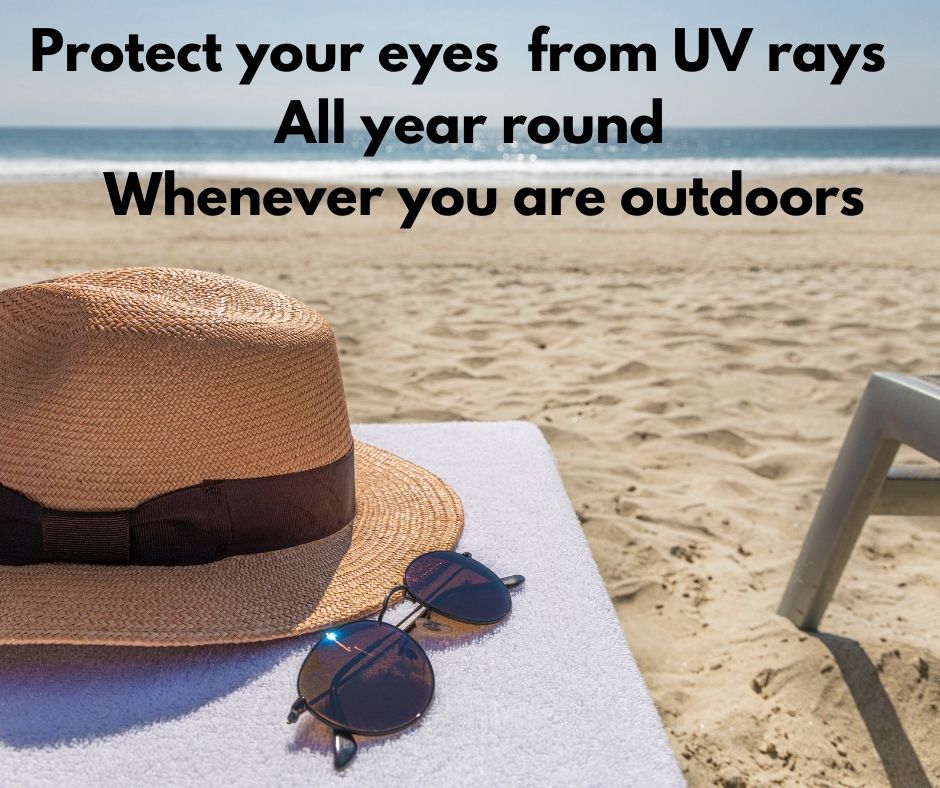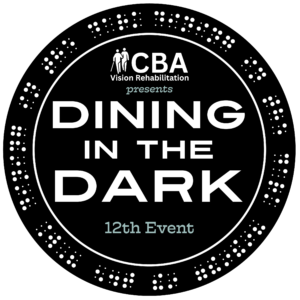
The sun releases energy (radiation) in many forms. The sunlight we see is one form, and the heat we feel from the sun is another. Ultraviolet (UV) rays, a third type, are also invisible to the eye. UV rays cause sunburn, and they can damage your eyes and hurt your vision.
There are two types of UV rays: UV-A and UV-B. Over time, the effects of these UV rays may cause a number of eye problems. UV-A can hurt your central vision. It can damage the macula, a part of the retina at the back of your eye. The front part of your eye (the cornea and the lens) absorbs most UV-B rays, but these rays may cause even more damage to your eyes than UV-A rays.
You can protect your eyes from UV rays by wearing proper eye protection and hats that block UV rays.
At the beach or on the slopes – Be aware that if you are at the beach or on the ski slopes, you should wear sunglasses with a darker tint to block more light. Your risk of eye damage from the sun is greater because of reflection off the water and snow.
Buy labeled sunglasses – Sunglass makers do not always attach a tag or label stating the amount of UV radiation that sunglasses block. Only buy sunglasses that provide a clear statement about how much UV radiation is blocked.
Read the labels! Always read labels carefully and look for labels that clearly state the sunglasses block 99 to 100% of UV-A and UV-B rays.
Do children need sunglasses?
Yes. Children are at special risk from the harmful effects of UV rays since their eyes do not have the same ability as adults to protect them from UV radiation.
Here are some helpful suggestions for choosing sunglasses for children:
– Check to make sure the sunglasses fit well and are not damaged
– Choose sunglasses that fit your child’s lifestyle – the lenses should be impact resistant and should not pop out of the frames
– Choose lenses that are large enough to shield the eyes from most angles.
– Find a wide-brimmed hat for your child to wear along with the sunglasses.
This will give your child extra protection against the sun. Wearing a hat can cut the amount of UV rays that reach the eyes in half.
UV rays can come from many directions.
They radiate directly from the sun, but they are also reflected from the ground, from water, snow, sand and other bright surfaces. The best intervention for UV protection is to use eyewear that absorbs UV rays and wear a brimmed hat or cap. Like adults, children should wear brimmed caps and sunglasses that screen out 99 to 100% of UV rays.
Eyewear that absorbs UV rays gives you the most protection. All types of eyewear, including prescription and non-prescription glasses, contact lenses and lens implants, should absorb UV-A and UV-B rays. For UV protection in everyday eyewear, there are several options like UV-blocking lens materials, coatings and photochromic lenses. UV protection does not cost a lot of money and does not get in the way of seeing clearly.
People who work or play in the sun for long periods of time are at the greatest risk. The risk of sun related eye problems is higher for people who:
– spend long hours in the sun
– have had cataract surgery* or have certain retina disorders
– are on certain medicines, such as tetracycline, sulfa drugs, birth control pills, diuretics and tranquilizers that increase the eye’s sensitivity to light.
*If you have had cataract surgery, you may be more at risk of injury from sunlight unless the artificial lens you received during surgery absorbs UV rays.
UV protection and proper eyewear for outside activities.
For certain outdoor activities, you may also have to use eyewear designed to provide impact protection for that activity. Here are some things to consider when buying eyewear for outdoor activities:
Biking/Cycling – UV protection and protection from wind and debris
Boating – UV protection and glare protection
Skiing/Winter sports – UV protection
– Polarized lenses to reduce glare and brightness
– Yellow, amber, orange-red tints to improve contrast
Hiking/Mountain climbing – UV protection and Polarized lenses to reduce glare
Racquet/Ball sports – Protective eyewear and UV protection
Working Outdoors with power tools/chemicals – Protective eyewear and UV protection







